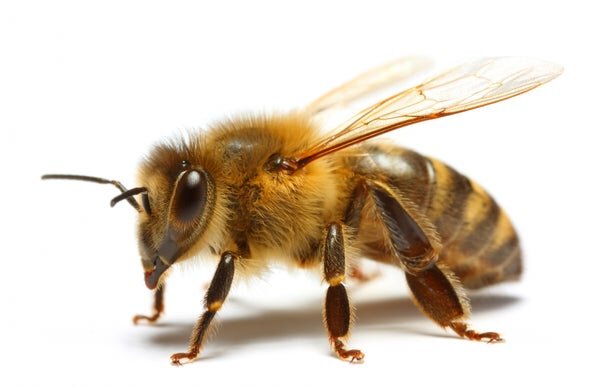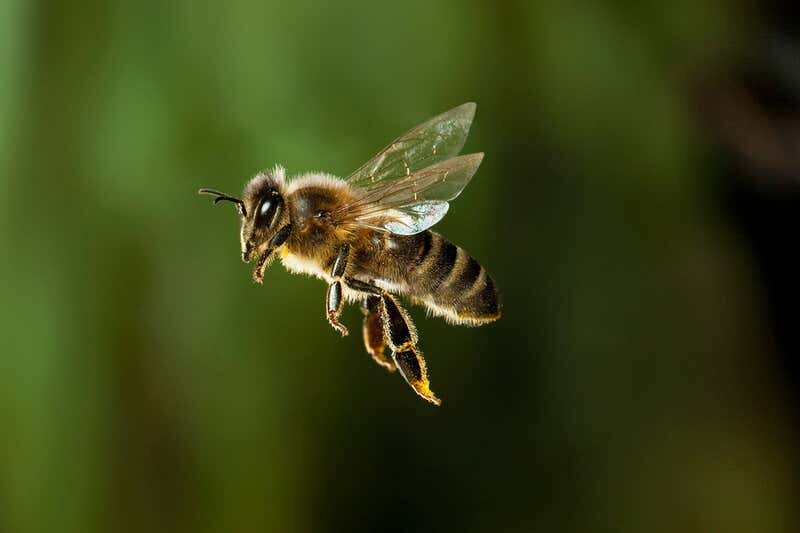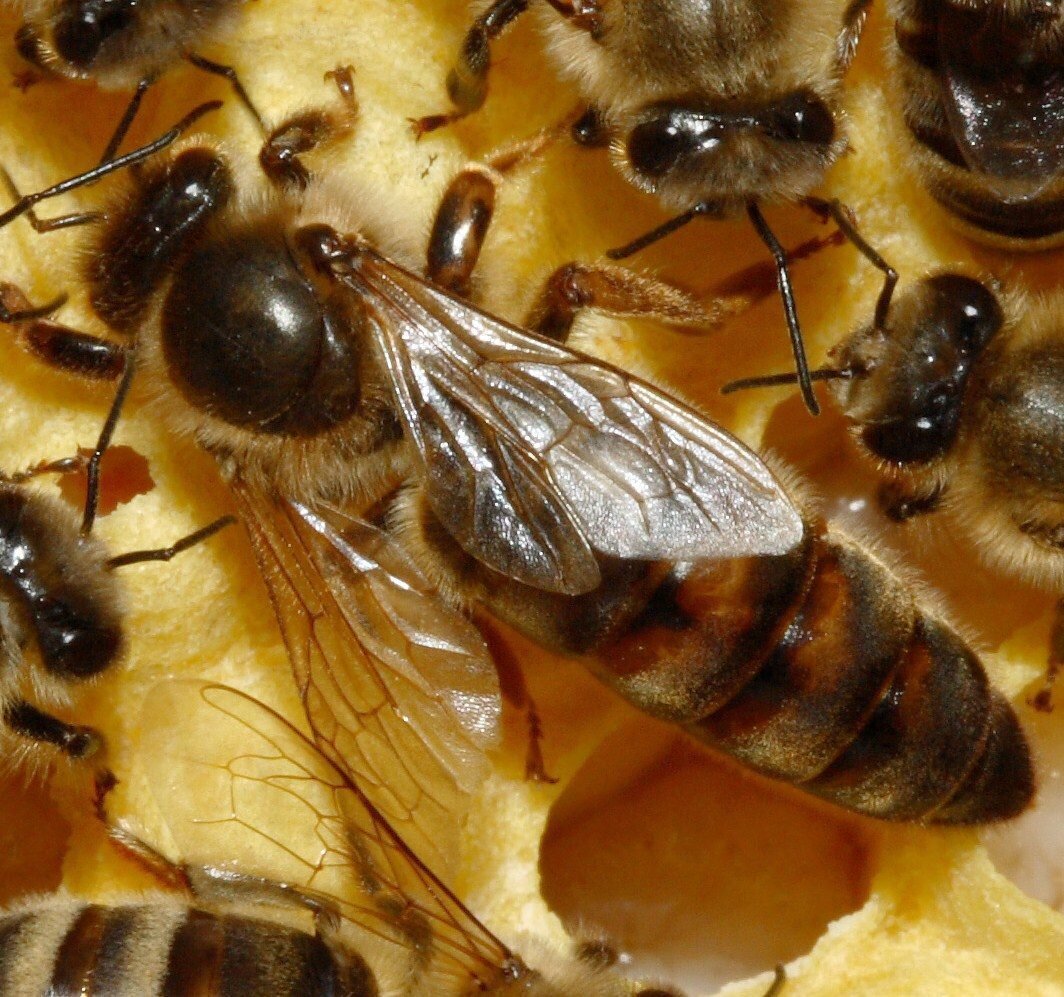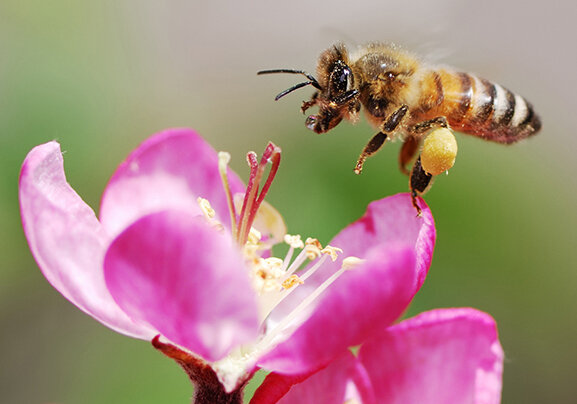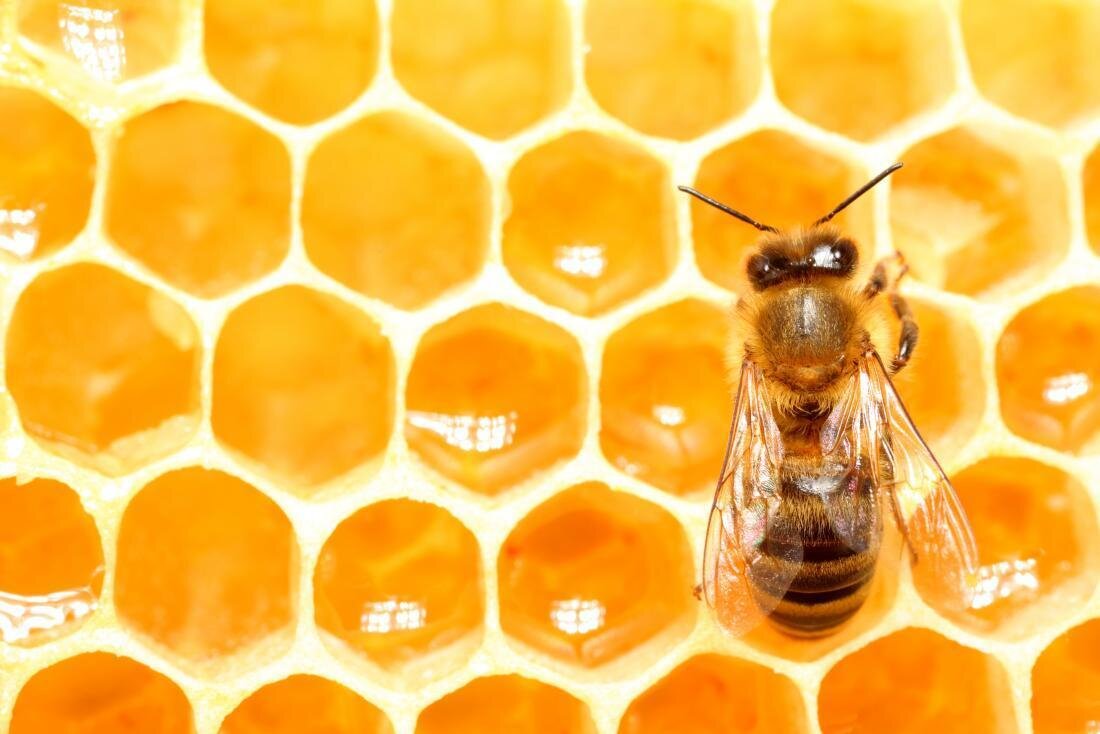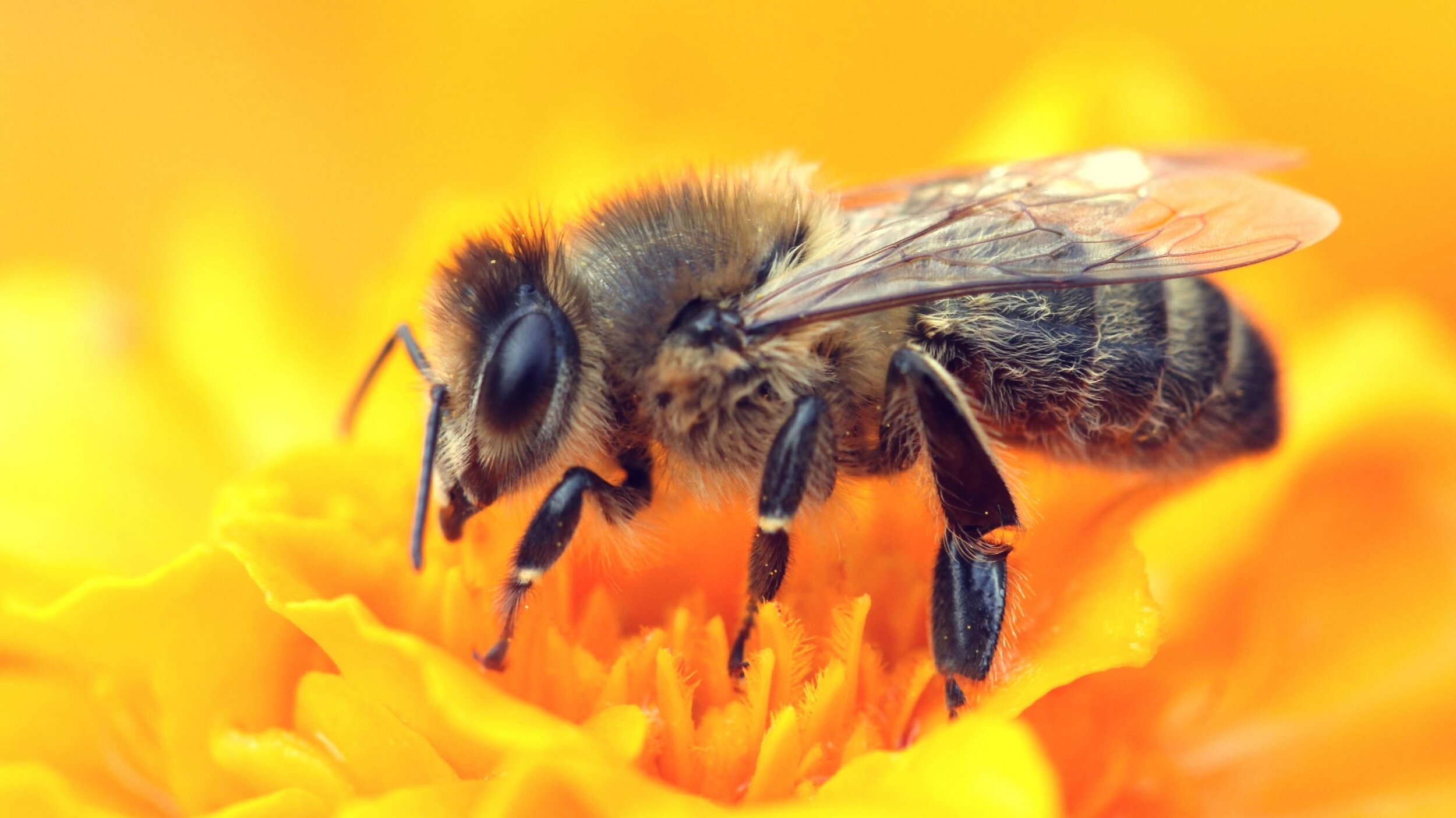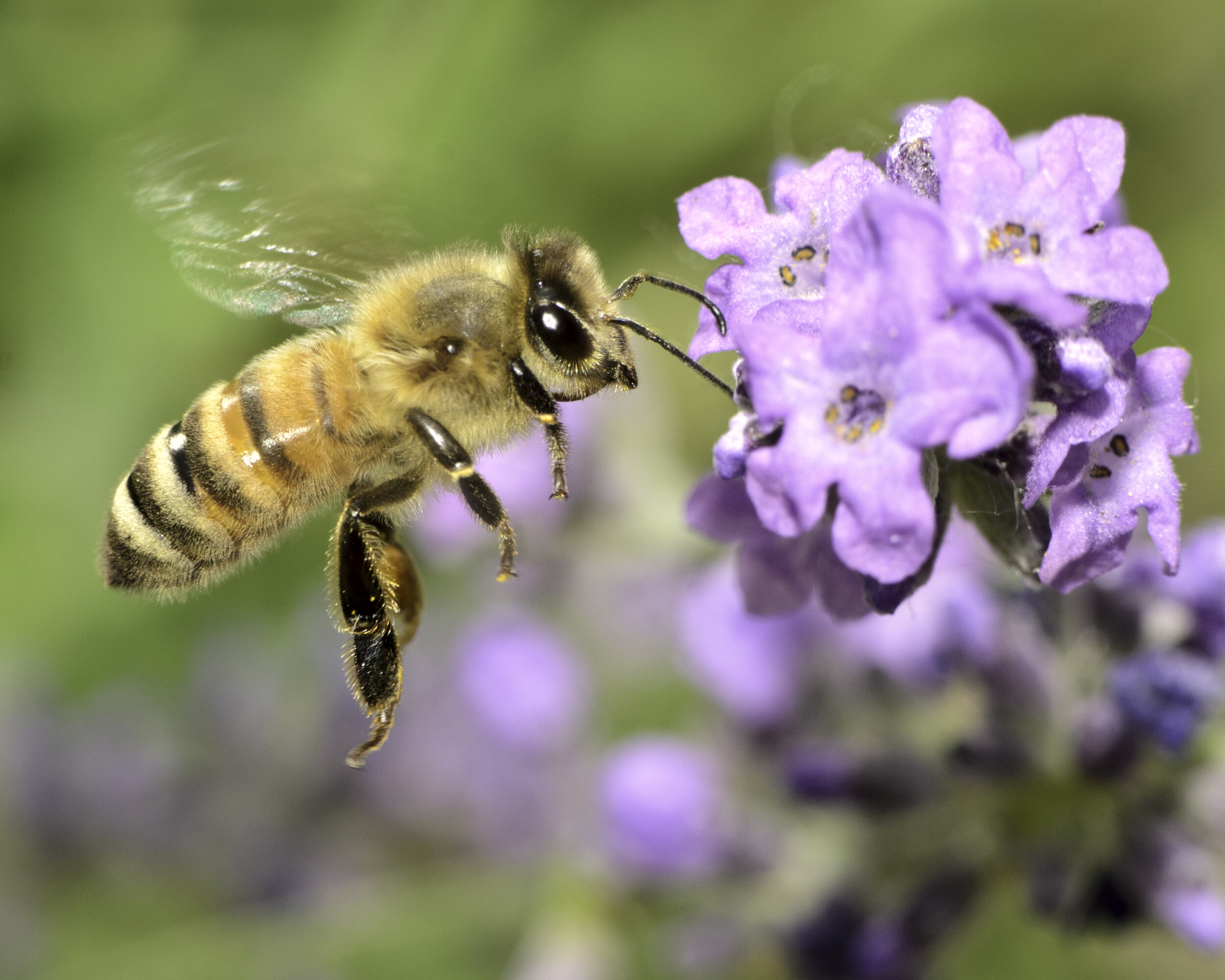Honey bee Fun Facts
Did you know 80% of the pollination of the fruits, vegetables, and seed crops in the U.S. is accomplished by honey bees? In honor of World Honey Bee Day, the 3rd Saturday in August, let’s say thanks to honey bees for the pollination services and honey they provide!
What is a honey bee? A honey bee is a honey-producing bee (genus Apis of the family Apidae), especially a European bee (A. mellifera) introduced worldwide and kept in hives for the honey it produces.
Here are some more fun facts about these amazing insects:
Bees have more than 2 eyes
Incredible as it may seem, the honey bee has FIVE eyes, two large compound eyes and three smaller ocelli eyes in the centre of its head. The ocelli can detect the transition from darkness to light. They use them to detect where the horizon is.
Bees can fly up to 20 mph
The normal top speed of a worker is about 15-20 mph when flying to a food source and about 12 mph when returning with nectar, pollen, propolis (resin collected from tree buds), or water.
Male bees in the hive are called drones
Male bees in the hive are called drones while female bees in the hive are called worker bees (that is, except for the Queen bee). Drone bees primary job in the colony is to mate with the Queen bee. They are larger than worker bees, with bigger eyes and a thicker abdomen. Drone bees do not have stingers.
The Queen bee lays a lot of eggs
The Queen can lay up to 2,500 eggs a day! She is essential to the life of the hive and her sole role is that of reproduction. Since she is so busy laying eggs, she has “attendants” that follow her all day, cleaning her and feeding her.
To make 1 lb. of honey, bees must collect nectar from 2,000,000 flowers!
A honey bee visits between 50 and 100 flowers during one collection flight from the hive. In order to produce 1 pound of honey, 2 million flowers must be visited! Each average worker bee makes only about 1/12 teaspoon of honey in its lifetime. The honey bee is not born knowing how to make honey; the younger bees are taught by the more experienced ones.
The Average American eats 1.7 lbs. of honey a year
In 2019, the average person in the U.S. consumed about 1.7 lbs. of honey. Did you that honey is one of the few foods known to have an eternal shelf life. There are even reports of edible honey being found in several-thousand-year-old Egyptian tombs. Honey’s longevity can be explained by its chemical makeup: The substance is naturally acidic and low in moisture, making it an inhospitable environment for bacteria.
Other Fun Bee Facts:
The United States has an estimated 211,600 beekeepers
Bees have been producing honey for at least 150 million years.
At the peak of the honey-gathering season, a strong, healthy hive will have a population of approximately 50,000 bees.
It would take approximately 1 ounce of honey to fuel a bee's flight around the world.
Honey bees do not die out over the winter. They feed on the honey they collected during the warmer months and patiently wait for spring. They form a tight cluster in their hive to keep themselves and the queen warm.
Honey bees’ compound eyes are sensitive more to the blue end of the light spectrum and into the ultraviolet. Flowers reflect large amounts of ultraviolet light and will appear very bright to a bee. Bees are totally red blind so you may want to rethink your planting for bees to include more blues.
Bees use the position of the sun to navigate. Bees' eyes are sensitive to polarized light, which penetrates through even thick clouds, so bees are able to ‘see’ the sun in poor weather.
Honey bees are one of science's great mysteries because they have remained unchanged for 20 million years, even though the world has changed around them.
Honey bee or honeybee? What’s in a name?
You may have seen this type of bee described in one word - honeybee - and in two - honey bee. Which is correct? Well, that depends on who you ask.
The Merriam-Webster Dictionary entry is written as honeybee (or honey bee) while Wikipedia says honey bee (also spelled honeybee). Not really a definitive answer! Then we found this on the Entomological Society of America website:
“Entomologists use two words if a common name accurately describes the order to which a particular insect belongs. For example, all true flies belong to the order Diptera, so true fly names will be spelled using two words by entomologists — house fly, horse fly, pigeon fly, or stable fly, for example. However, despite their names, dragonflies and butterflies are NOT true flies — their orders are Odonata and Lepidoptera, respectively — so they are spelled as one word.
Likewise, honey bees and bumble bees are true bees in the order Hymenoptera, so entomologists spell them as two words, even though the dictionaries and newspapers spell them as one.”


